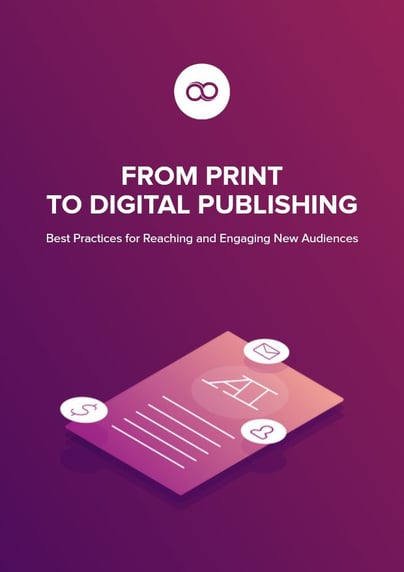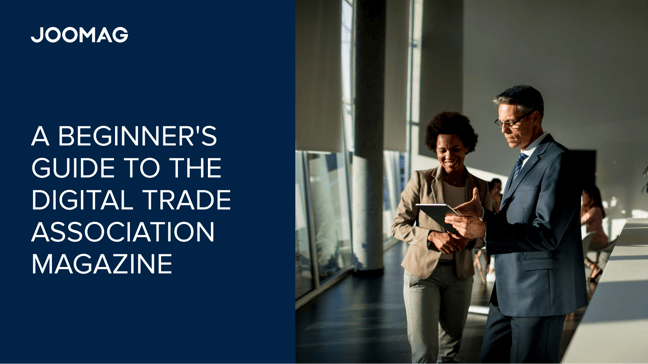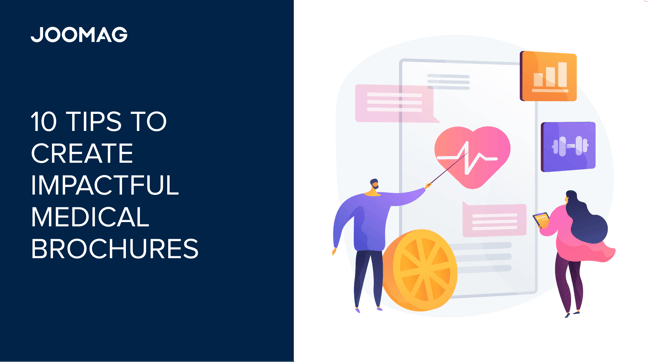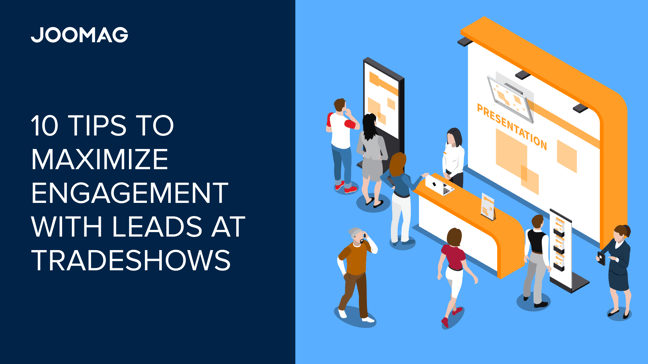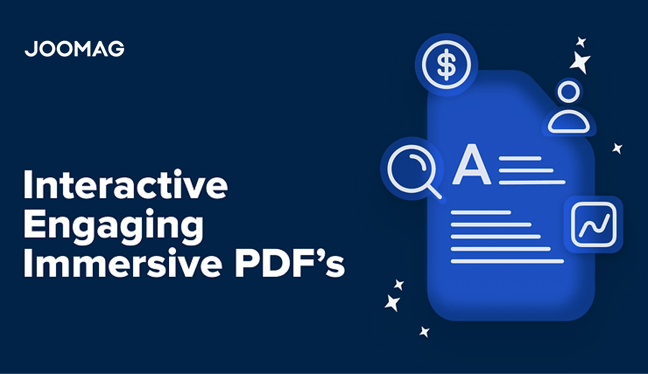
Star Wars vs. Star Trek.
Coke vs. Pepsi.
Print vs. digital publishing.
Is one truly better than the other? It’s a matter of taste, of course, but one thing’s for sure: when rivalries like these collide, controversy always follows. And it’s easy to see why. Star Wars is considered by many to be the greatest space opera of our time, yet Star Trek is held in equal regard by many die-hard “Trekkies” around the world. Some argue that Coke and Pepsi taste the same, while others agree that the latter packs a sweeter punch in comparison to the former’s less-refined flavor.
“Star Wars is better. And Pepsi. Fight me.” - Chewie, 2018
But if there’s one tug-of-war that’s shaken the world of work to its very core, it’s print vs. digital publishing. In this article, we’ll explore why the entire planet has taken a digital turn, why print to digital transition is not a bad thing at all, and why it’s worth your consideration too.
Transitioning from print-based to digital media: a universal trend
A vast majority of Americans -- roughly 95%, according to the Pew Research Center -- owns a cellphone. There are more than 4 billion people around the world using the Internet today. A recent 2018 report conducted by We Are Social and Hootsuite reveals the staggering number of worldwide digital users. Below is a summary of their key findings:
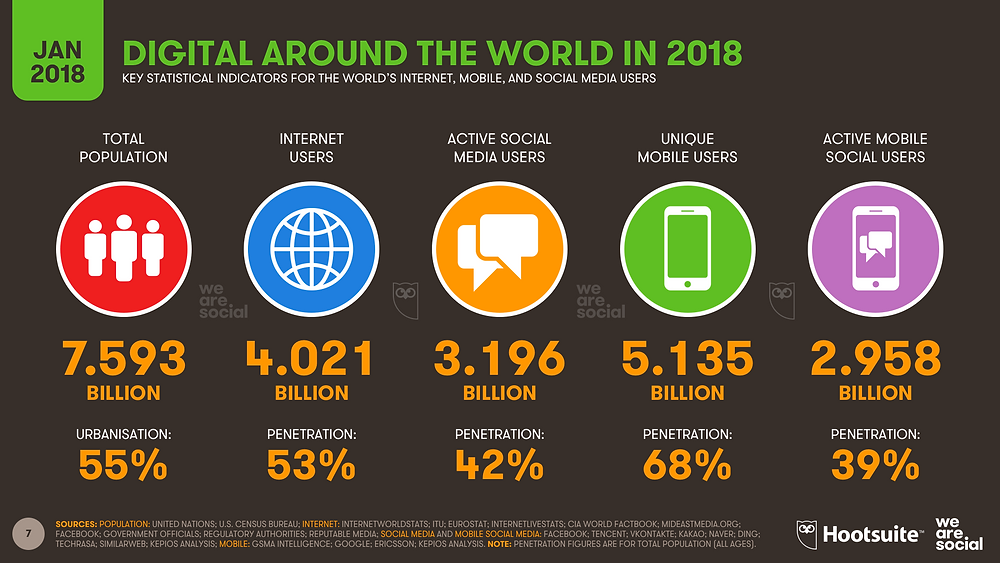 Via Hootsuite and We Are Social
Via Hootsuite and We Are SocialStart Creating Your Interactive Digital Publications Now!
Digital clicks with today’s wired generation of tech-savvy readers. Millennials, comprising the largest generation in the modern U.S. workforce, are comfortable using technology because they’ve grown up with it. So it makes sense that more and more businesses are adopting agile digital operating models to accommodate them. Agility, in a business sense, refers to an organization’s capacity to “rapidly respond to change by adapting its initial stable configuration" (source). It’s so vital that 68% of companies rate agility as one of the most important initiatives in regards to digital transformation.
Fueling this trend in equal measure are shifting consumer expectations. Immediate access to information is expected from younger demographics in particular. Mobile technology has disrupted every dynamic of the formerly straightforward customer-business relationship. And because it’s more affordable than ever, mobile tech has also single-handedly reworked the media industry’s content creation and consumption models. More and more customers are using technology to enjoy their favorite content while the media sector continues to embrace digital change-- engendering a synergistic relationship in the process. Beautiful, isn’t it?
Benefits of print to digital transition
Outputting content to an electronic format is becoming an increasingly popular choice for businesses around the world. Yet many are just starting to embark on their digital transformation journeys, according to CIO magazine.
If you’re a publisher who’s still on the fence about digital, we’ve compiled a list of the top 10 undisputed reasons why transitioning to an online model is never a bad idea.
Top 10 Reasons to Transition from Print to Digital Publishing
1. Interactive and Engaging Content
Online magazines, for example, are renowned for their rich interactivity. Media such as videos, audio files, photo galleries, and feedback plugins hook readers into the narrative, providing a more immersive user experience than print ever could. Coupled with visually striking designs and user-friendly navigation tools, it’s no wonder why digital media has gained so much traction in the past two decades.
2. Cost-Effectiveness and Environmental Sustainability
Digital content is highly accessible and can be quickly shared with anyone, anywhere.
3. High Accessibility and Versatility
It’s incredibly versatile as well, adapting to the viewer’s needs when needed. Online material can be viewed on desktop and mobile devices with little to no interruptions.
4. Reduced Printing Costs
Exorbitant printing costs are deal breakers for publishers looking to save a buck or two. Alternatively, media can be distributed electronically at absolutely no charge.
5. Environmentally Friendly
Unlike print, digital is environmentally friendly as paper and ink materials are not used.
6. New Revenue Streams
Digital marketing can create new revenue streams through mobile content and online ad sales.
7. Enhanced Communication with Customers
Informative content like online newsletters and email lets publishers keep in touch with customers.
8. Valuable Analytics
Analytics offer valuable insights into content usage patterns, allowing publishers to understand their readers on a more granular level. Knowledge like this is crucial for optimizing future content, or helping advertisers promote their content more efficiently by providing useful data (like click-through rates).
9. Increased Speed to Market
For competing organizations, speed is everything. Digital speed can be 5 times faster than traditional business.
10. Cloud Storage and Accessibility
If time is of the essence, online media can be stored and accessed on clouds-- services which cache data on remote servers for future use.
Making the Transition with Joomag
Converting Print to Digital Made Easy
The easiest way for moving your publications from print to digital is converting your PDF to digital HTML5 format. Let's see how it works:
1. Drag and drop the PDF version of your magazine to Joomag’s platform. Then watch as it converts to a digital flipping HTML5 magazine in mere minutes.
2. After your PDF document is converted to a digital format, you will be able to enhance it by adding interactive elements - audio, video, links to websites or to other pages in your publication.
For more information about converting PDF to digital magazine check out our Joomag Online Editor.
Digitizing your entire playbook is no small task. You’ll likely stumble along the way, but being able to address changes in the evolving business landscape instantly is well worth the initial growing pains.
Embrace the Future of Publishing with Joomag
Taking the online leap shouldn’t be hard, and it isn’t with Joomag-- the all-in-one digital publishing platform trusted by over 5,000 businesses worldwide. Joomag’s feature-rich platform includes interactive content creation tools, responsive design on mobile and desktop devices, multiple distribution channels, in-depth branding options, built-in content performance metrics, a complete CRM solution, monetization features, multiple privacy settings, system integration, and a suite of team collaboration features. There’s more under the hood, and you can learn all about us by visiting our website or reading our free white paper.
You think it, we’ll build it! Publishers are free to create any type of content they need to win more leads, for example, or drive more website traffic. Digital magazines, catalogs, brochures, newsletters, presentations, flyers, SOPs, newspapers, menus, photo albums, documents, reports and user manuals are just some of the options available to you.
Not ready to give up on print? Neither are we! Joomag still offers printing options for businesses who are looking for creative ways to complement their digital marketing strategies. You can allow readers to print your entire publication, for example, or only certain pages from it. You can also show or hide the print and download icons in Joomag’s magazine viewer. It’s all there waiting for you, so let’s get started.
Start Creating Your Interactive Digital Publications Now!

FAQ
1. Why are companies switching to digital publishing?
Answer: Companies switch to digital to meet the tech-savvy expectations of today’s consumers, offering interactive and engaging content. Digital is also cheaper than print, better for the environment, and lets companies understand what their readers like using analytics.
2. What makes digital publishing better than print?
Answer: Digital content is more interactive, accessible on any device, and cheaper to produce than print. It opens up new ways to make money, lets you talk directly to your readers, and updates easily. Plus, you can see how well your content performs with analytics.
3. How can Joomag help move from print to digital?
Answer: With Joomag, just upload your print PDF, and it turns into a digital magazine. You can make your content fun with videos and sound. Joomag has everything to create, share, and track your digital publications, making going digital simple and effective.
